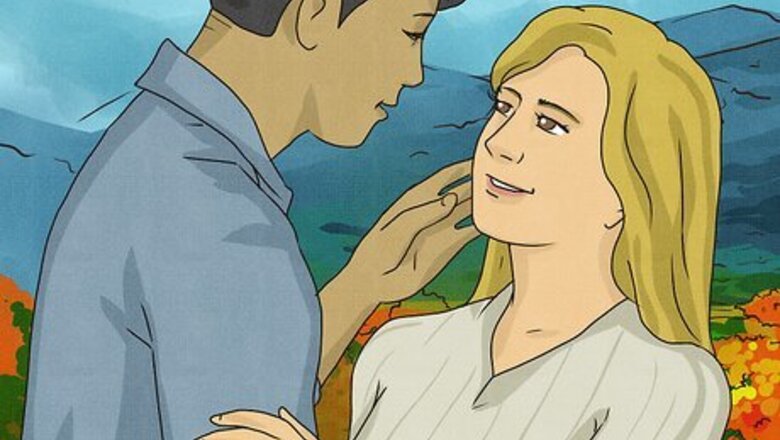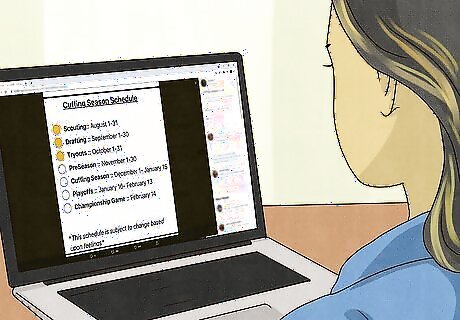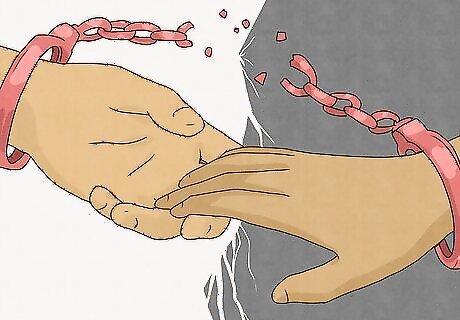
views
What is cuffing season?

Cuffing season describes the fall and winter months when more people seem likely to couple up in a romantic relationship. If you’re cuffed, it means you’re in a relationship where you’re not seeing anyone else. Looking to get a partner in time for cuffing season? Start swiping or dating in the early fall months–the season starts in October and lasts through the chillier months until mid-February (around Valentine’s Day). Cuffing season peaks the Sunday after New Year’s Day. That’s when dating apps have a surge in new sign ups. Pop culture implies that people lower their standards for cuffing season because they want to find a partner in time for the colder months.
How do you know if you’re “cuffed?”

If you’ve been making plans for the near future with your significant other, you’re likely cuffed! It’s always tricky to tell the difference between casual dating and an exclusive relationship. However, here are some other key signs you’re “cuffed” for cuffing season: You can open up to each other about your feelings. You’ve got a solid texting game. Neither of you ghost each other or leave each other on read. Your family and friends are at least aware that you’re together (if you haven’t made plans to have them meet your partner already). You’re not worried about scheduling time together on the weekends because you know you’ll be hanging out! You leave things at each other’s houses (cozy knit sweaters, maybe even spare toothbrushes).
What’s the cuffing season schedule?

Popular cuffing season schedules break down the fall months into football-inspired terms. Are we saying you should follow this exactly? Well, you could…but only if you want to. Still, if you’re curious what the internet-famous “cuffing season schedule” looks like, here you go: Scouting: August 1-31 Drafting: September 1-30 Tryouts: October 1-31 Preseason: November 1-30 Cuffing Season: December 1-January 15 Playoffs: January 13-February 13 Championship Game: February 14 (Valentine’s Day)
Will my relationship last beyond cuffing season?

It’s up to you! The end of cuffing season doesn’t have to lead to a breakup, even though pop culture suggests cuffing season relationships are short-term. You can make your relationship last if you practice good communication, spend quality time together, have common interests, and build a solid friendship beyond just romance. Seasonally, breakups spike just after Valentine’s day and in the weeks before spring break (usually in late March).
What are the rules for cuffing season?

The “rules” for cuffing season are the same as for healthy relationships. Be upfront about your intentions—whether you’re looking for a casual relationship or a serious relationship. Check in about each other’s needs, expectations, and feelings. Ultimately, be kind and treat your partner with respect. You can check in about expectations by saying something like, “Are you looking for a fall fling or something more?”
How do you know if you’re ready to get cuffed?

There’s no set timeline to "define the relationship" (DTR). Many couples DTR at the start of cuffing season, since cuffing season often means putting a pause on casual dating. You’re ready for an exclusive cuffing season relationship when you want a relationship but feel solid and happy on your own, too. What are you hoping to get from the relationship? Can you imagine yourself happy with this person a few months down the road? Then, look outside at the relationship itself and ask these questions: Do you and your cuffing partner share basic values? Do you care for others in the same way? Can you be both silly and serious together? Can you be yourself with this person? If you answer yes to those questions, it might be a good sign you can DTR before cuffing season.
How do you ask your partner to DTR?

Explain how you feel about the relationship, then ask your partner about their expectations. For many people, cuffing season means commitment, but some people might just want a winter fling. It might feel tough to be vulnerable and say that you want a committed relationship. But in the end, sharing what you want from the relationship can get you and your partner on the same page. Try out these conversation starters: “I really like spending time with you. What are your thoughts on being exclusive?” “Quick check in! How’re you feeling about labeling our relationship?”
Why is it called cuffing?

“Cuffing” comes from the idea of linking people together with literal handcuffs. You might’ve even heard similar terms for starting committed, exclusive relationships like “getting hitched” or being “tied down.” However, we likely owe “cuffing season” to African American slang from the New York area, where college students used “cuffing season” to describe the search for a winter love interest.
Why do people couple up during cuffing season?

Practically speaking, it’s difficult to go out and meet new people in colder months. But while dating gets harder in winter, the pressure from family and friends to bring home a partner for the holidays typically gets higher! With reduced social interaction from the weather and expectations from family, having a partner through winter might suddenly sound fantastic. In addition, cuffing season’s effect may get stronger the more popular it becomes online. Even hearing about cuffing season might make people more conscious of being single around fall and winter, so they might decide to seek out a partner. According to one survey on a dating app, men are 15% more likely to look for a relationship in winter and women are 5% more likely.
Is cuffing season a real thing, scientifically?

Biologically, it’s hard for scientists to say whether cuffing season is a real phenomenon. Unlike some other mammals, humans don’t have set mating seasons. However, the lack of sunlight in winter causes many people to experience a decrease in serotonin, the “happiness chemical.” As a result, cuffing season might be some people’s way of combatting loneliness and the winter blues through partnership.
When did cuffing season become a thing?

Cuffing season showed up on Urban Dictionary in 2011, but it became popular in 2013. In 2013, the rapper Fabulous released the song “Cuffin’ Season,” and that spring, many college papers started circulating articles with the term. For the word nerds out there, don’t worry, “cuffing season” is also a dictionary-approved phrase. The Collins Dictionary officially added the term in 2017, and it was even shortlisted for “word of the year.” The first known social media reference to cuffing season comes from a tweet by Brooklyn College Radio Host Holley Murchison in 2008.




















Comments
0 comment